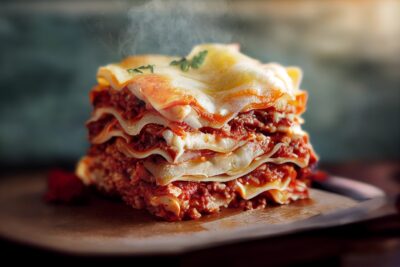 Successful stories take readers by the hand and invite them into the multi-sensory world the writer has created. Integrating as many senses as possible is critical to helping readers invest in the story and what is happening from one sentence/scene/chapter to the next. However, it requires a delicate touch to avoid bombarding the plot with in your face, obvious attempts at integrating the fabulous five: sight, smell, taste, hearing, and touch. Let’s whip up a batch of lasagna and see what possibilities we can come up with.
Successful stories take readers by the hand and invite them into the multi-sensory world the writer has created. Integrating as many senses as possible is critical to helping readers invest in the story and what is happening from one sentence/scene/chapter to the next. However, it requires a delicate touch to avoid bombarding the plot with in your face, obvious attempts at integrating the fabulous five: sight, smell, taste, hearing, and touch. Let’s whip up a batch of lasagna and see what possibilities we can come up with.
Sight
What time of day is it as you’re assembling the ingredients on the counter next to the stove? Saturday afternoon or 6pm after work? The light coming in the kitchen window will tell the reader without the writer having to announce it. What ingredients do you have? The box of pasta, sauce (jar, or are you making it from scratch?), and several kinds of cheese. What does the pan look like where the assembly will take place? What does the counter look like–wooden, marble, clean or cluttered? The pot on the stove? Where are your utensils and what do they look like–are they brand new from the store or handed down from your grandmother?
Smell
The boiling water is ready for the pasta. Did you inhale the steam as it floated up from the pot? When you open the box of pasta, what does it smell like? Maybe not much of anything except the cardboard packaging. How is that sauce coming along? As you unwrap/open the packages of cheese, what scents fill the air and waft around you? Is the parmesan particularly pungent as you grate it onto the cutting board? (Careful! Don’t cut your finger.) Fresh herbs are always yummy in lasagna. If you added them to the sauce, what did you use? Oregano? Basil? Parsley? What aroma is released as you chop or cut them up?
Taste
Aren’t you glad you added those fresh herbs? How did it improve the relatively bland tomato sauce you started with? Did you sprinkle in some parmesan? A splash of wine? Careful, it’s hot! Blow gently to cool it off before you taste it. Do you like the taste of fresh parsley? Did you try some after cutting it up? The cheeses have distinct flavors and textures. Try them separately as you imagine them combined and melty in the finished dish. Have another sip of wine.
Hearing
Two pots are on the stove. One holds the gently, rolling boil of the water holding the pasta. The one with the simmering sauce sounds like a lava pool at Yellowstone National Park. Plooping and plopping. The reader knows you were chopping herbs and grating cheese. Is there a breeze coming in through the open window, bringing birdsong with it? How about the glug-glug as you add wine to the sauce? What sound does your spoon make as it blends it in (makes a difference if it’s plastic or metal)?
Touch
Ouch! Did the heat of the pan sneak through that hole in your oven mitt? Dunk it in some ice water while the lasagna cools. Cool the lasagna about 20 minutes, otherwise you’ll burn the roof of your mouth. The chilled wineglass feels good against that burned index finger, but it starts to hurt again when you dip it into the hot, sudsy water and wash dishes. They can drip-dry in the drainer (less wear and tear on that finger). It’s a bit awkward, using the remote, but it feels just fine around the side of that cold bowl holding three scoops of chocolate almond ice cream.
So, the sensory lasagna. You watched it browning in the oven, savored the heavenly aroma filling the room, listened to the bubbling, molten cheese as you lifted it from the oven and FINALLY got to taste the result of your efforts! The golden, cheesy topping crackled as your fork pierced the top layer, and it made that burned finger less of a catastrophe.
Bonus
A carefully crafted sentence can integrate several senses at the same time without feeling cumbersome. A sentence from our lasagna story might read something like this: It was Sophie’s Saturday afternoon tradition, making Grandma Rose’s recipe for lasagna in the faded, floral apron Sophie found in the kitchen drawer the day of the funeral.
A word of caution
Not every sentence will/should contain all of the five senses. Trying to cram all of them in will frustrate you and overwhelm the reader. You don’t always have to spell out every detail. So, pick and choose which ones have the most impact in a sentence as it evolves into a scene, chapter, and finally, a story. Bon appétit!

Shutta Crum
Anne–Love the title of this post. Made me read it. I like how you juxtaposed cooking with writing. Now…I just gotta go look up a lasagna recipe. Thanks!
Anne
I’m glad you enjoyed it. Good luck with the recipe!
Marie Q Rogers
What a beautifully crafted essay! The message emerges organically from the narrative, each point nicely illustrated.
Anne
Thank you, Marie! I’m glad you enjoyed it, and I hope it was helpful.